Goldencreeper
- Gourd or Melon (Cucurbitaceae family):
- Thladiantha dubia Bunge
- EPPO code:
- THDDU
- Other names:
- Thladianthe
Species information
- Lifecycle:
- Perennial.
- Propagation:
- Reproduces by underground tubers.
- Emergence:
- Goldencreeper’s shoots emerge from a tuber; peak emergence takes place typically in late May to early June.
- Habitat:
- This species can be found in scattered regions in southern Ontario. Most commonly, though, it is found in old gardens, along roadsides, and in waste areas and cultivated fields.
- Competitiveness:
- No information exists on the competitiveness of this species, but its climbing nature can negatively affect harvesting efficiency.
Identification clues
Young plant
- Young leaves:
- Goldencreeper has alternate leaf orientation. Leaves grow on short stalks and are broadly heart shaped with a deep, rounded U-shaped base, smooth margins and a slender, pointed tip that stretches out beyond the rest of the leaf. The leaves have rough hair on both surfaces.
- Mature leaves:
- Mature leaves appear the same as the species’ first leaves, only larger.
Mature plant
- Stems:
- The plant has slender, twining, vine-like stems that climb over other plants or spread over the ground by way of tendrils. Each stem can be 1–2 m in length.
- Flowers:
- Goldencreeper produces showy, bright yellow flowers. Goldencreeper has only male (pollen-producing) flowers. The plant blooms from July to September.
- Roots:
- Goldencreeper has large, fleshy, underground, fingerling potato-like tubers that are wide spreading and very persistent.
Often mistaken for
I know it's not Wild cucumber because wild cucumber leaves have five lobes, and its fruit resemble small, spiny cucumbers. Goldencreeper’s leaves, on the other hand, are broad and heart-shaped and the plant produces fingerling potato-like tubers.
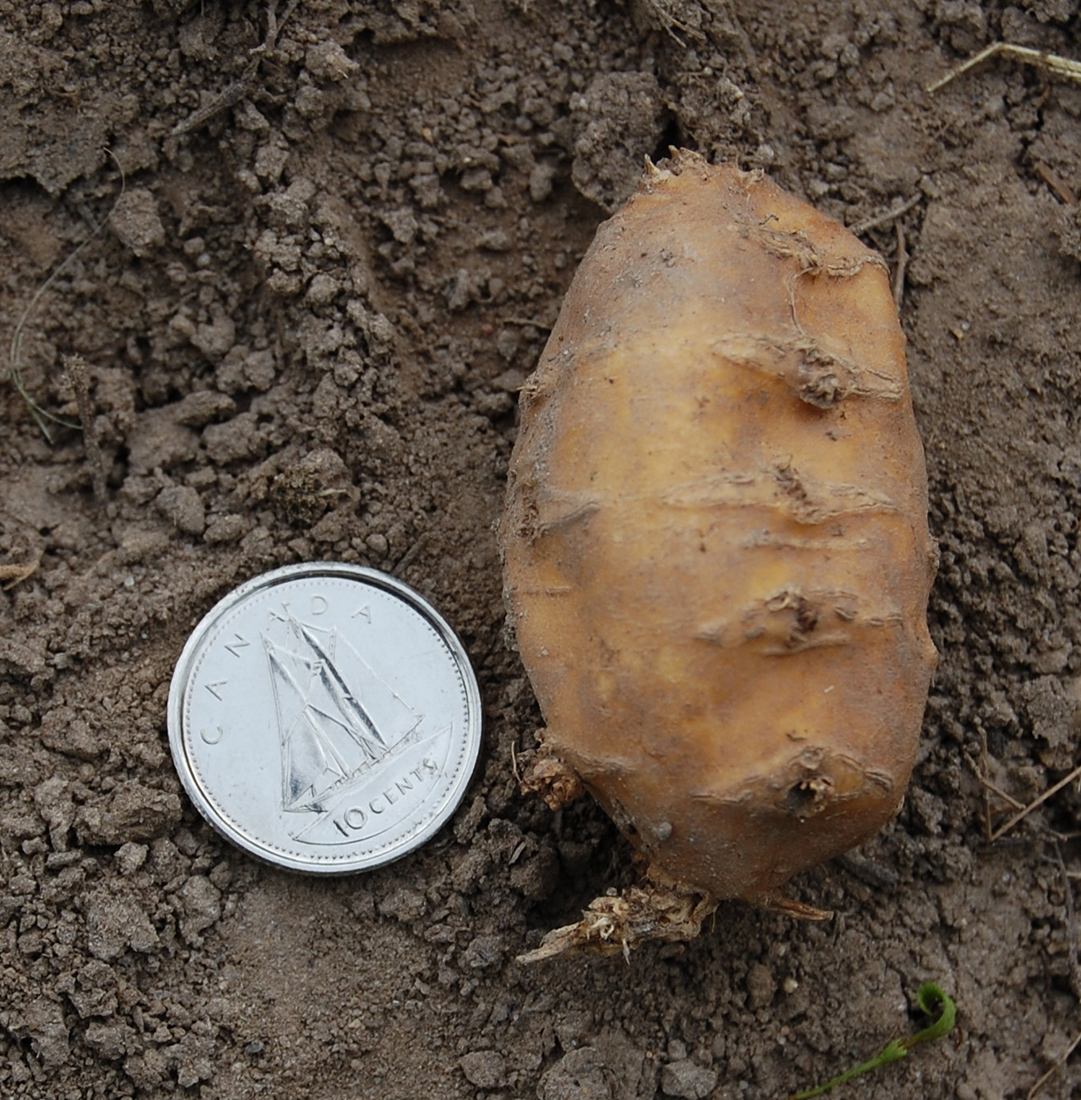
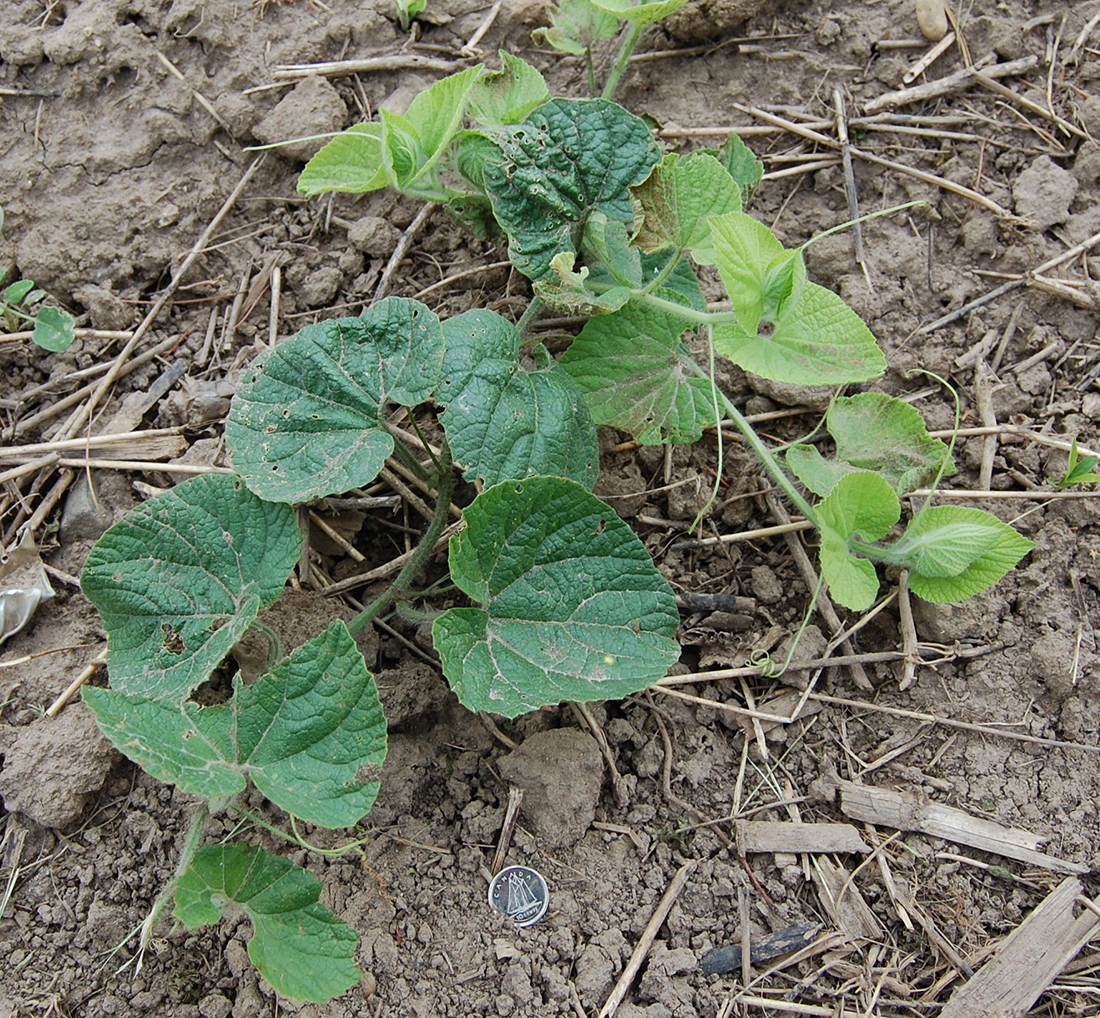
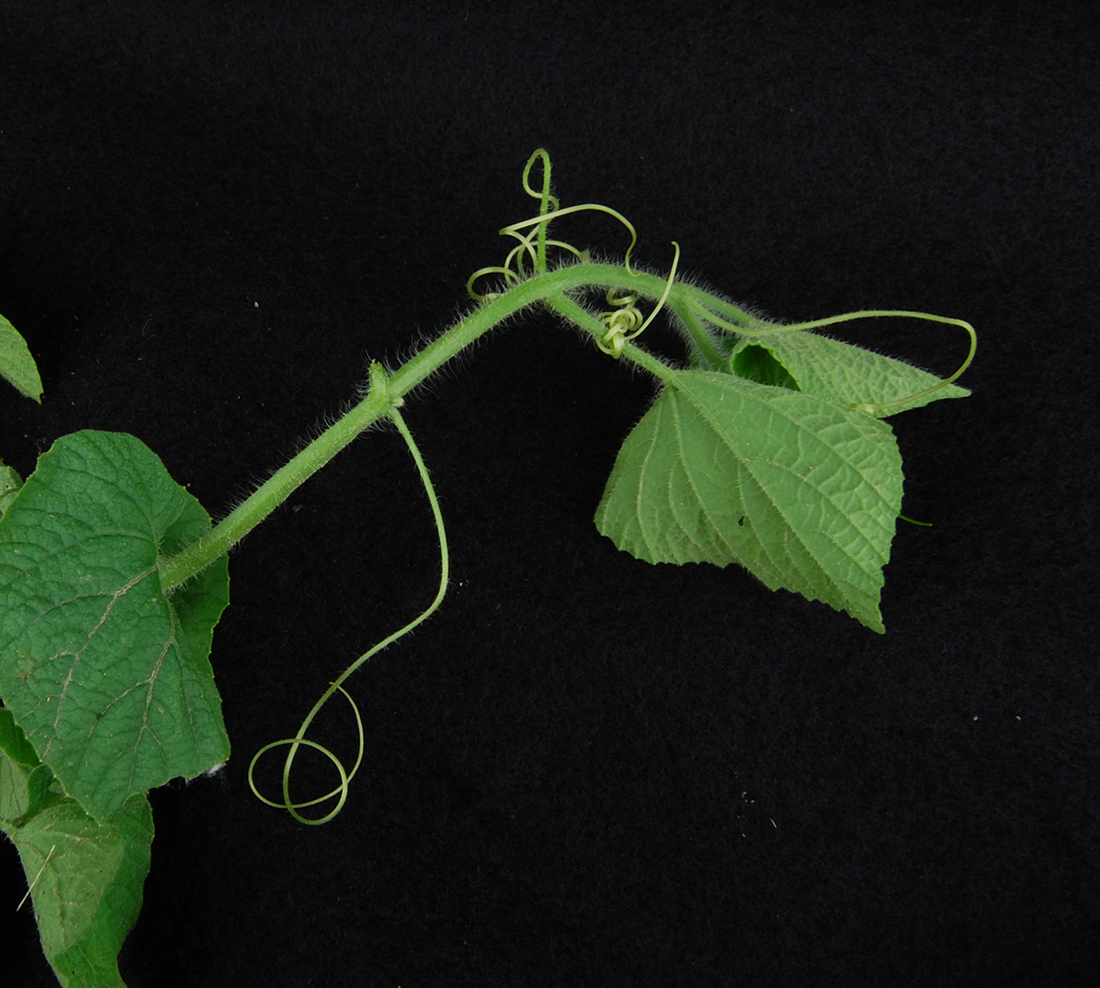
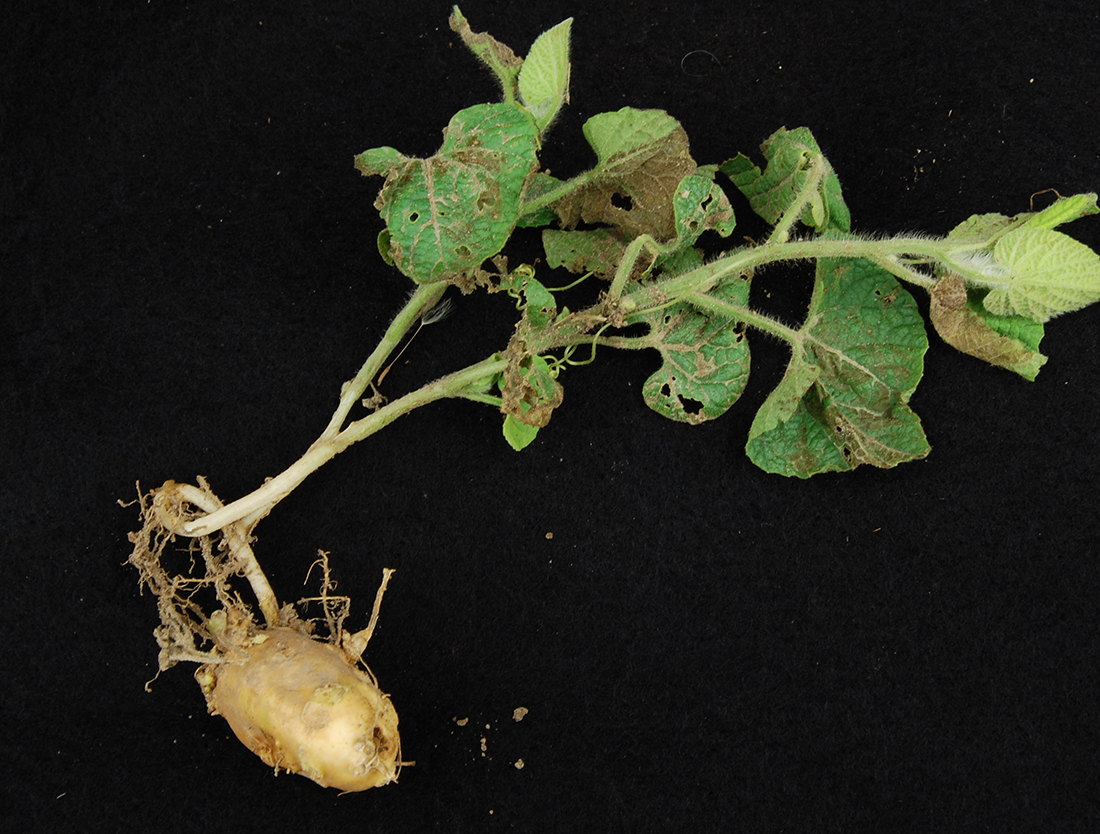
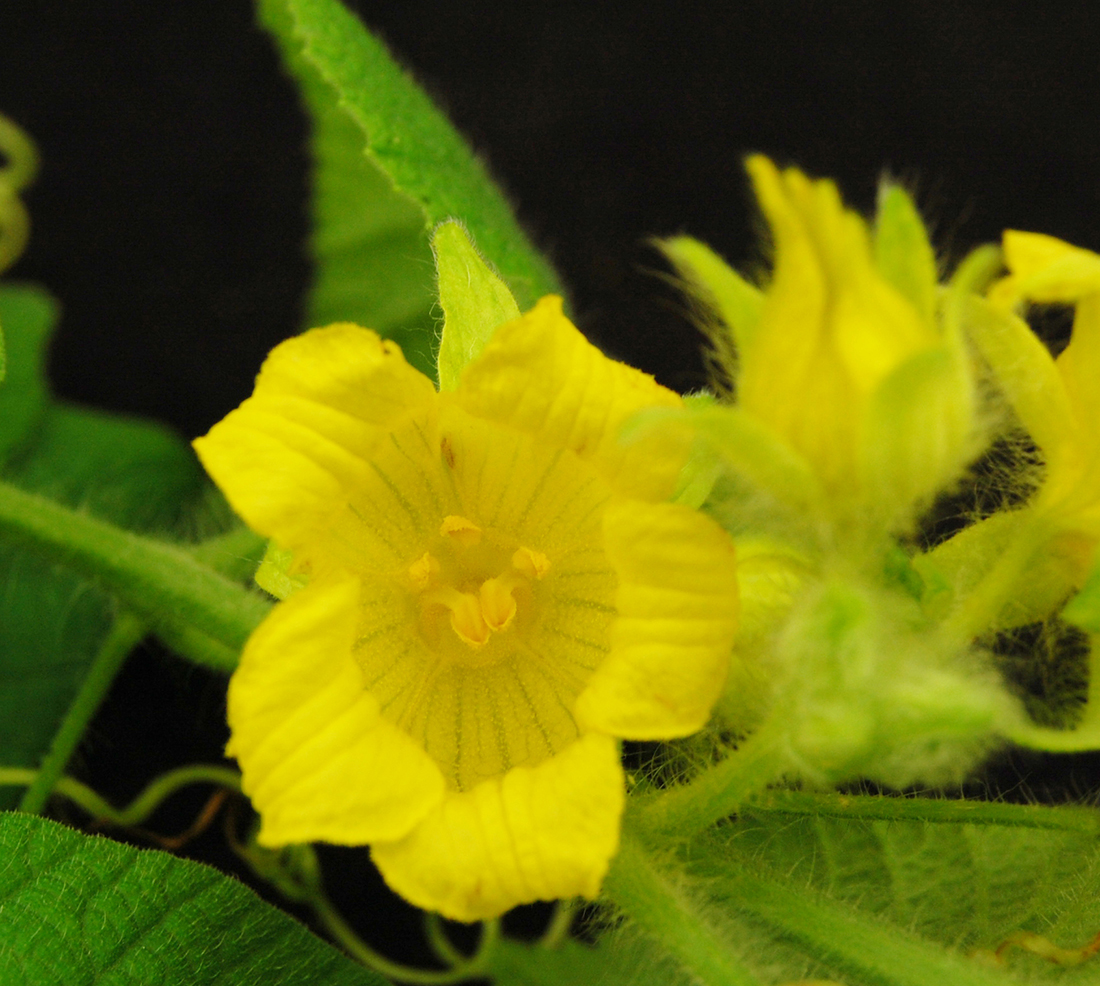
Updated: January 13, 2023
Published: January 13, 2023